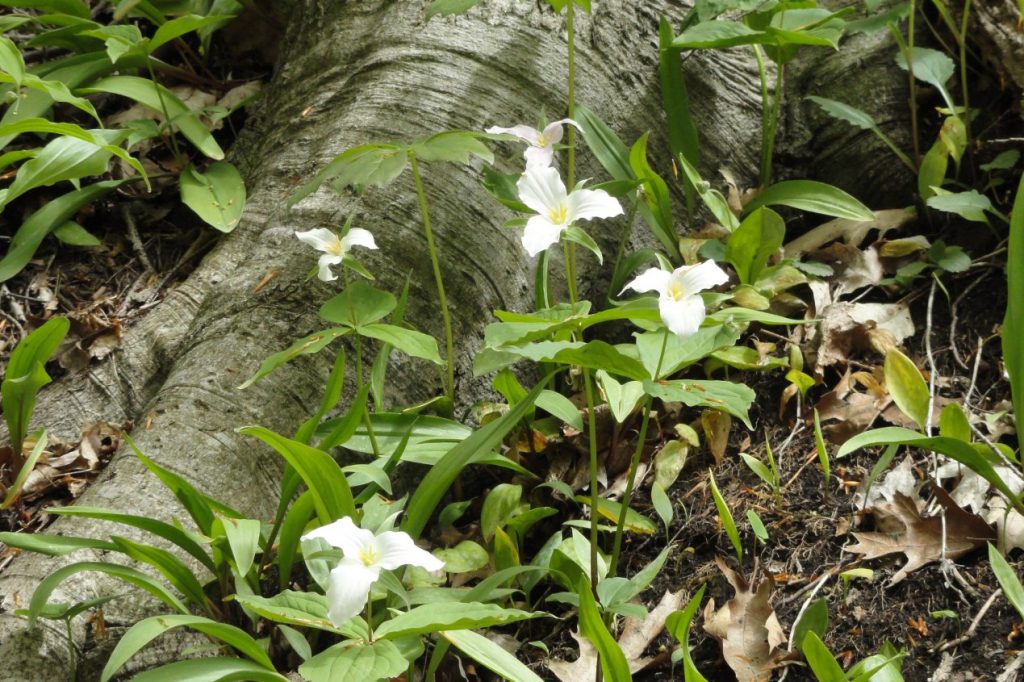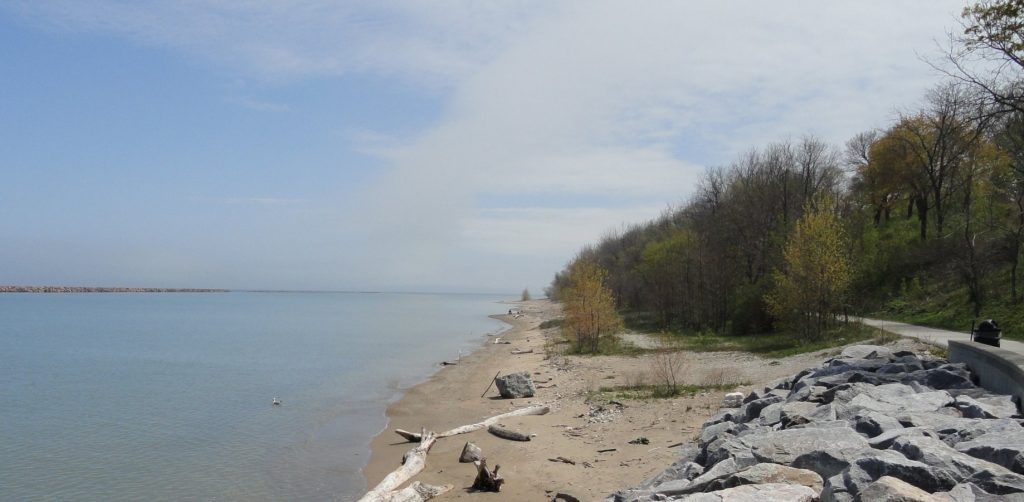
For two days, the fog & the sun fought over a half mile of shoreline w/o conclusion. It never pushed more than a quarter mile inland and didn’t hang more than a quarter mile out in the lake. It was a funny kind of fog, very bright. It could make you squint.
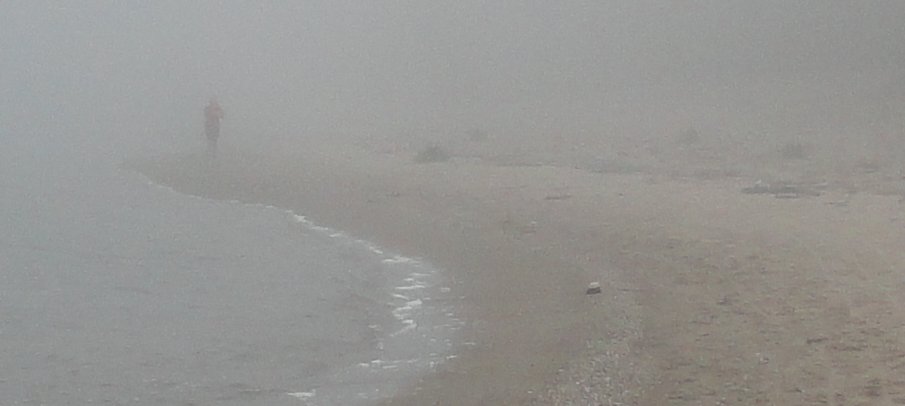
I was down at the Lake four separate times, so I saw the variety. Chrissy (sister) and I got down to South Shore under sun and blue sky. By the time we walked to Bay View beech, it was so foggy that you couldn’t see clearly even ten meters ahead, as you can see in the picture above, with the runner coming toward us out of the fog. It was just a little like a soft focus picture by time we got back along Superior Street, where we saw the deer wandering the roads, as you see below.
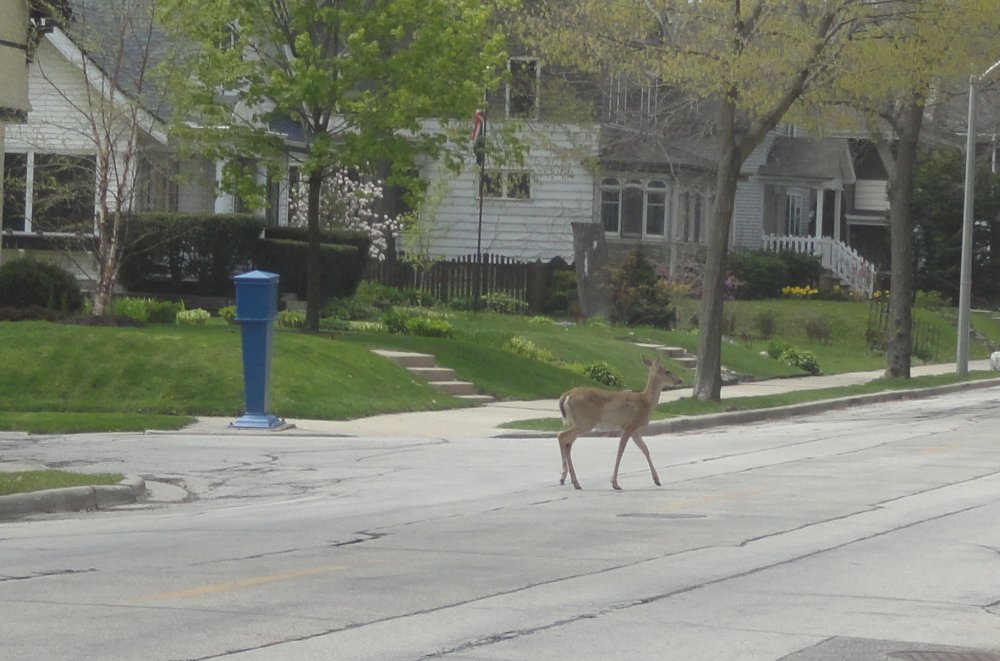
Chrissy J and I went down to Grant Park. Actually, I ran from Warnimont to Grant ravines and met Chrissy there. We walked done the Seven Bridges trail, built by the CCC many years ago. Unfortunately, one of the bridges has collapsed. I don’t think they are going to fix it, since they just removed the debris w/o doing much of anything else. I have a theory. I think they cannot repair the bridge because if they did they would have to upgrade it and the whole trail to make it ADA compatible, which would cost big bucks and ruin the ravine by putting up a wide, sloping paved path. Nothing can be done inexpensively anymore.
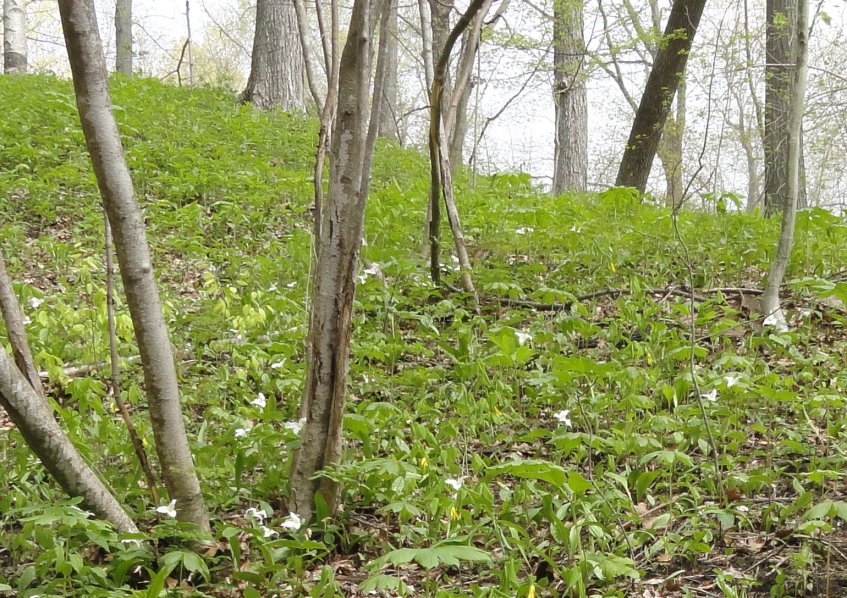
Beech-maple
Grant Park is a unique part of southern Wisconsin in that it is covered in beech-maple-basswood forests. You don’t find beech trees growing naturally even a few miles inland. The Lakeside in Milwaukee County is the eastern edge of the natural range. It is evidently the result of a subtle difference in climate and humidity. We have beech trees in Virginia. They tend to grow on north facing slopes or in ravines, places with more moisture laden air. Virginia is hotter than Wisconsin, but also more humid. Near Lake Michigan, there is lots of fog. As I wrote above, the fog pushes in and lingers only about a half mile inland. In Grant Park area, it is about up to Lake Drive, more or less where the beech trees leave off.
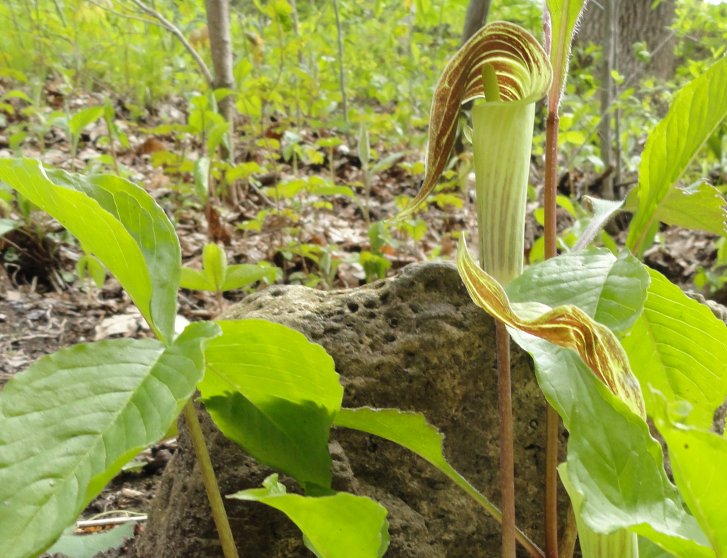
Wildflowers
I grew up with the eastern forests, so they are what I think of as home and I have seen the seasons of its changing face. In spring-time, just before the leaves come out, the wildflowers on the ground have their chance. They have to finish their generation before the canopy closes and the leaves put deep shadows on the ground. The flowers you see above are Jack-in-the-pulpit. If you look at the flower, you can see the pulpit and Jack is in it. Below are trilliums. Their seeds are spread by ants. The northern broadleaf deciduous beech-maple-basswood forest is too shady in summer to support much understory vegetation. In Virginia on our tree farms, the basswoods are replaced by tulip poplars and there are red maples instead of sugar maples. The understory vegetation is also much thicker. It took me a while to get used to Virginia. Now it seems strange to see the more open woods of Wisconsin. There is also a big difference in color schemes. Virginia forest soils are reddish-orange. Wisconsin soils are brown or black.
